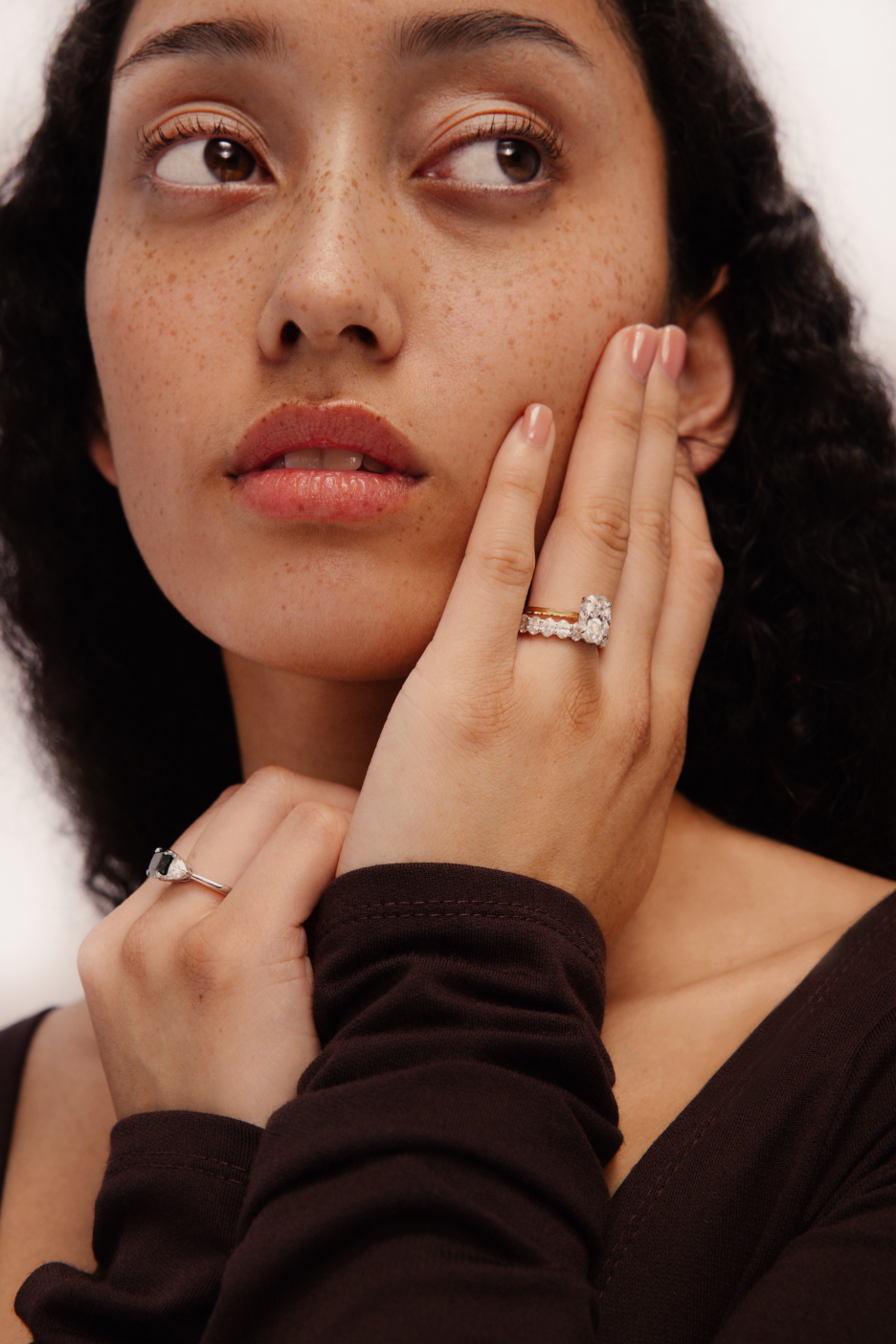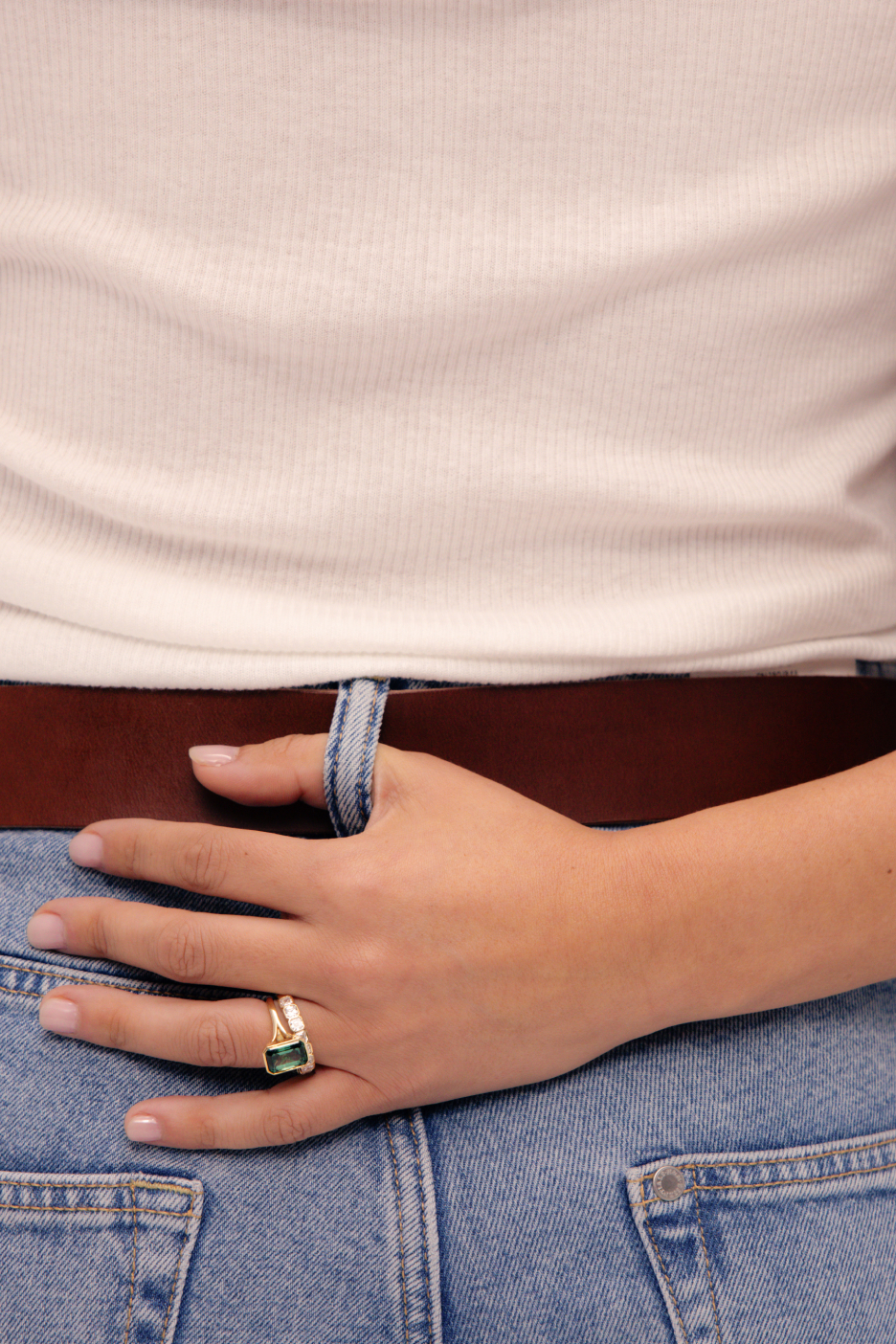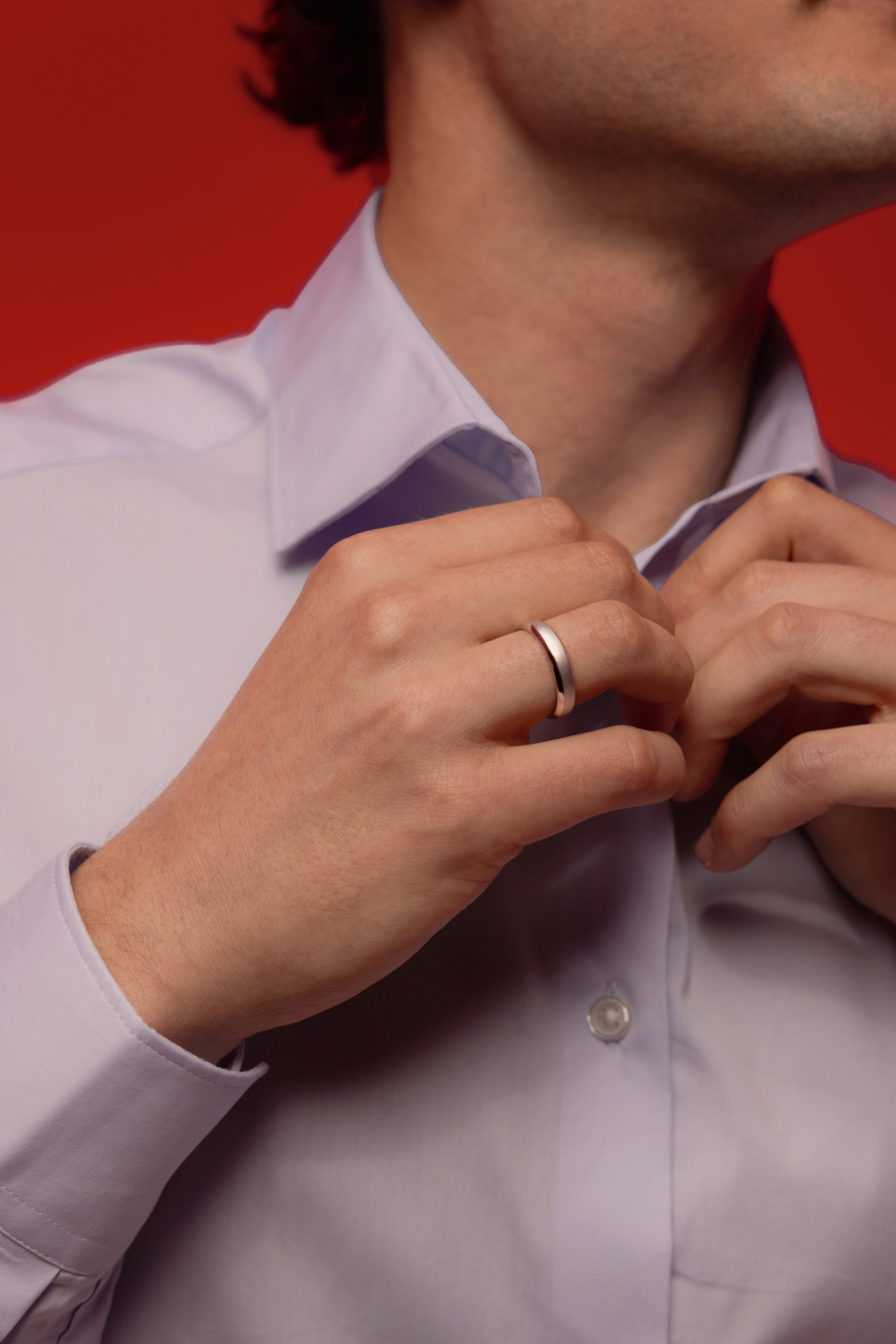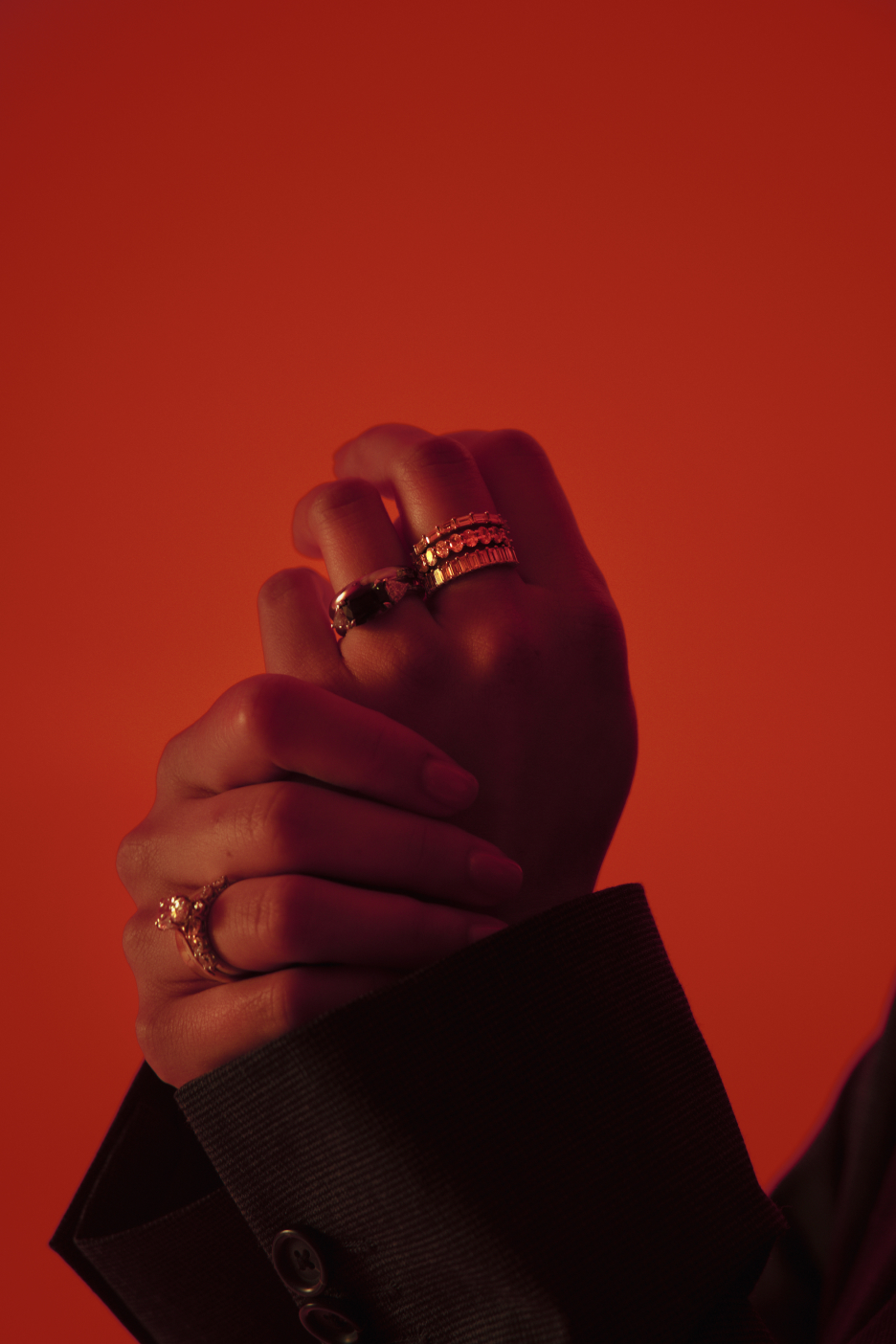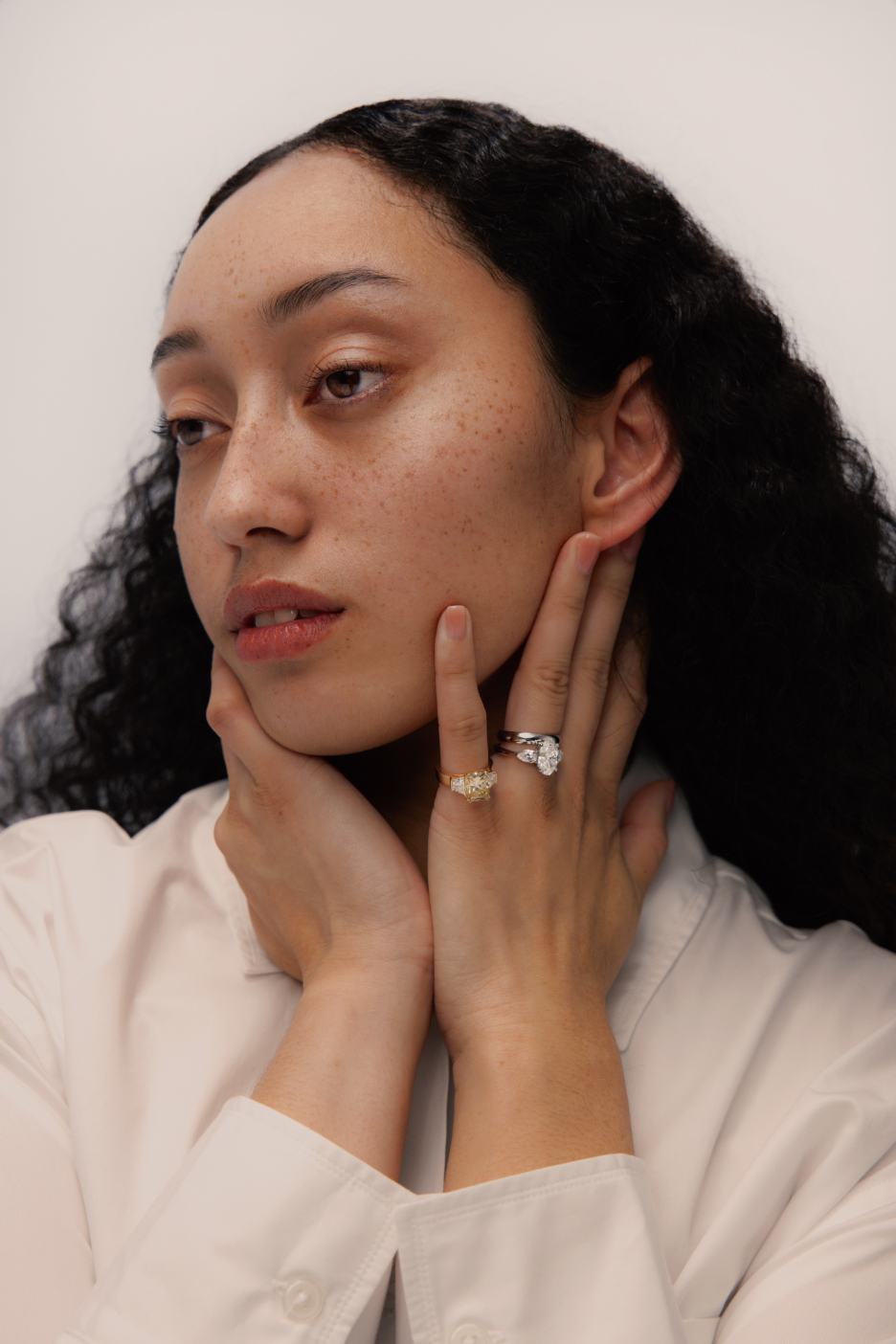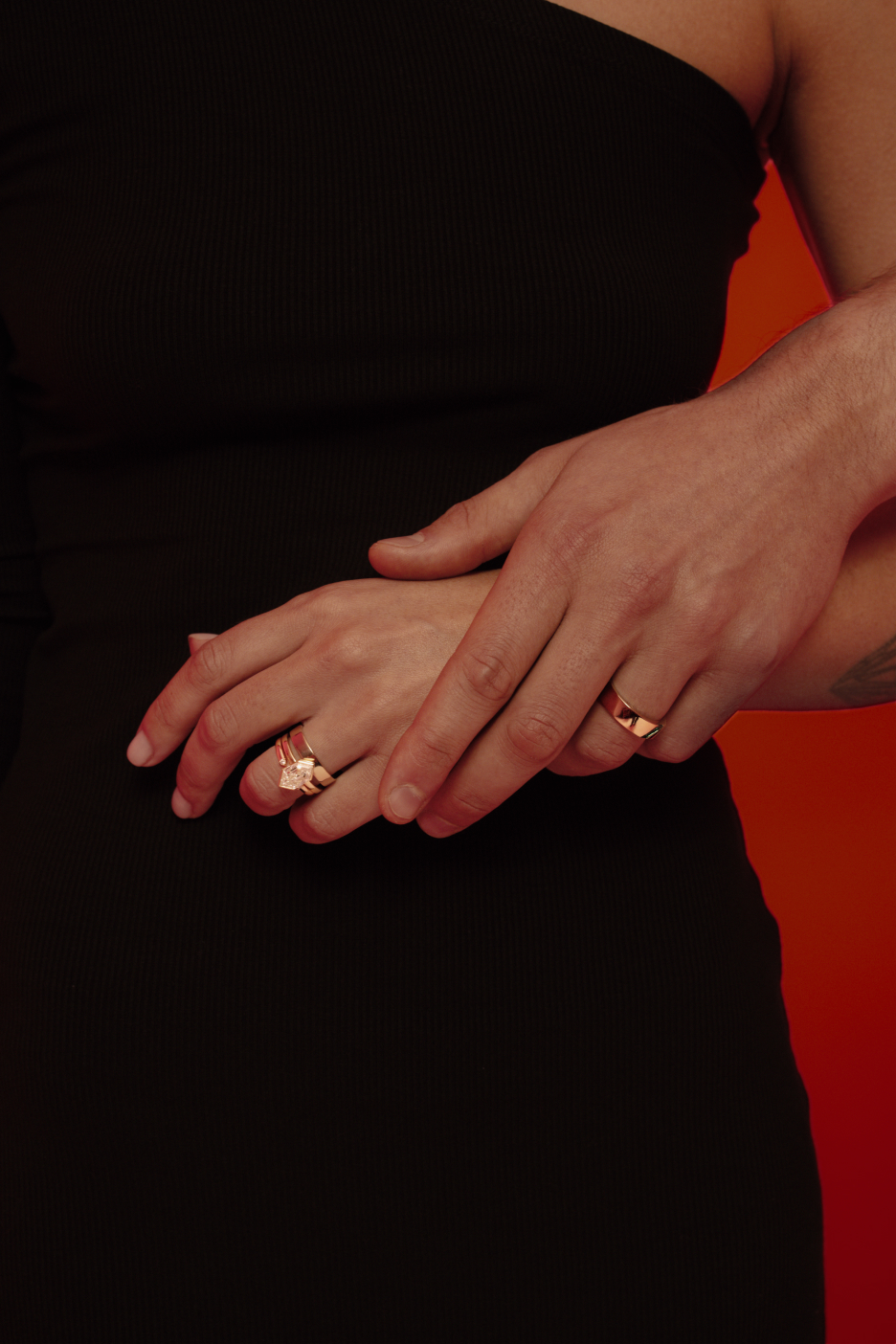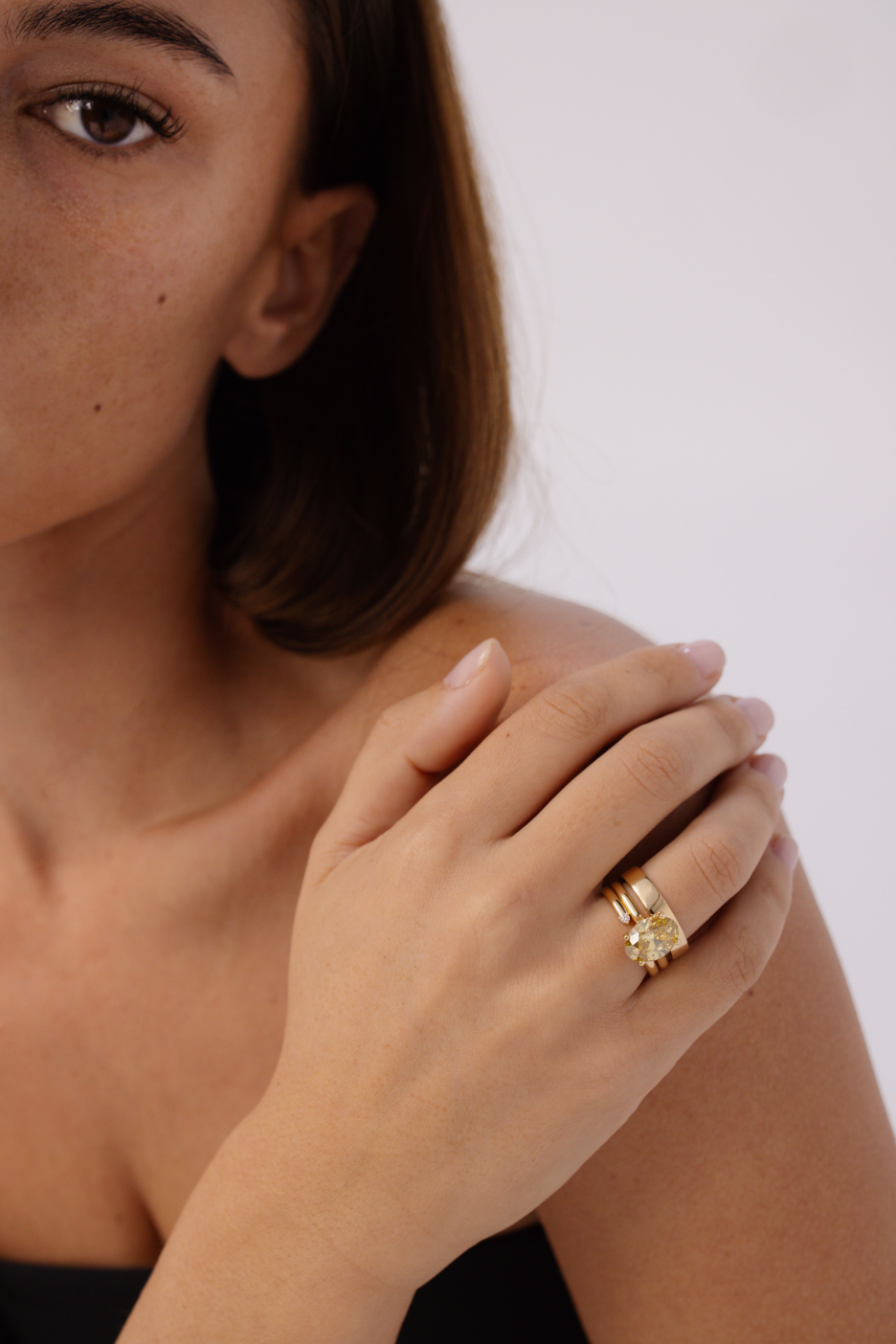Diamond Shapes & Cuts: The Practical Guide to Choosing the Perfect Stone 2023

When you are looking to buy or design an engagement ring, it is important to ensure that you and your jeweller are on the same page. Having a basic understanding of shape, its benefits and limitations will help you choose the best stone. And while it may seem that there are only three or four diamond shapes, working with a jeweller like Four Words can open up endless possibilities — even cutting your own shape!
Summary:
-
Diamonds and gemstones come in lots of different shapes but the most common in New Zealand are Rounds, Ovals and Emeralds. This shouldn’t stop you from creating something truly unique!
-
Each shape has its advantages and drawbacks. When choosing a shape you should consider your lifestyle, what you do for work and what you want your engagement ring to communicate.
-
Grading reports only tell half of the story. You can still end up with a poor diamond. It is important to work with a jeweller to get the best diamonds. At Four Words, we only work with the top 2% of diamonds and gemstones.
First, What Is A Diamond Shape? And Is It Different To Cut?
While most people use the terms "diamond cut" and "diamond shape" interchangeably, they are actually two different things. When most people say Oval or Princess Cut, what they mean is the shape that the diamond.
However, the tricky thing is that the "cut" on its own technically refers to the quality of the diamond and how it reflects light — one of the 'Cs' in the '4Cs'. This is usually broken down into its brilliance, fire, and scintillation.
In this article, we will try and be clear as possible when talking about the diamond shape vs cut 😊.
Diamond shapes: Why is it important?
Choosing a diamond shape is one of the most important decisions when choosing or designing a ring. So when you work with a designer at Four Words, we spend a lot of time understanding your vision and then get to know what stone shape you like and how to incorporate that into a design you will love — whether it be a three stone design or something more dainty.
The other thing to note is that while this article is about diamond shapes, all these shapes are also available in other gemstones such as Moissanites, Sapphires, Rubies, Spinels, and Alexandrites — and a wide range of colours too!

A three stone emerald diamond engagement ring featuring a 1 carat centre stone and two 0.5 accenting stones with a platinum band.
Below are the standard shapes that we typically work with.

The Round Brilliant Cut
If ever there were a diamond shape synonymous with engagements, this would be it. Since its massive explosion in popularity during the nineteen forties, this diamond has adorned the fingers of movie stars and lovestruck young adults alike making up 75% of the diamonds sold worldwide. It is also the most sparkliest diamond.

Round diamonds (should) have perfect symmetry and are incredibly versatile on their own or if you are working with more than one stone. Depending on its size, the Round diamond can be a centre stone or accent stone.
For example, we designed this multi-stone ring featuring a 1 carat Pear emerald stone with three Round diamonds and a contrasting Pear diamond making up the accent.

The Round diamond can also look amazing on its own. Below is a 2 carat Round diamond with a halo and diamonds running along a platinum band.

The most important thing to pay attention to with a Round diamond is its cut. There are three components that go into cut:
- Proportions (this includes the depth and angle of its facets)
- Polish
- Symmetry
At Four Words we typically only work with the best diamonds that the eye can see. This is one standard higher than Tiffany’s triple excellent diamonds.
When choosing a Round diamond, we recommend you think about the lifestyle and personality of the person wearing it. And while the Round diamond is incredibly versatile, the carat size can make it look either dainty or ‘blingy.’ Want to learn more? We have written an in depth guide on Round diamonds.
If you decide on using another stone, you can still use the Round shape to create something spectacular.
For example, we created a 1 carat equivalent Alexandrite with two accenting diamond pear stones in a gold band. The ring above with the Pear diamonds is its complementary wedding band.

The Oval Cut
The Oval is one of our most popular shapes at Four Words. And just like a Round, Ovals are versatile and are often used in three stone designs. They also look bigger compared to Round diamonds of an equivalent carat weight.
Another benefit of an Oval diamond is that it helps to elongate your finger. It helps to make your finger appear slender and longer. This is due to the shape not having any corners with its large surface area.
The wedding ring in this image is a solitaire Oval diamond ring. The wedding band features five Pear diamonds also in a gold band. The eternity band has diamonds going all around it.

A popular design here at Four Words is the three stone with an Oval centre stone with two accenting Round stones in a 14K gold band.

At Four Words we can also do Ovals in a number of different gemstones. For example, we did an Oval aquamarine with six accenting Marquise diamonds on a 14K gold band.

While Ovals are becoming increasingly popular, you can get a lifeless Oval cut diamond that suffers from the bowtie effect even if you are diligent about the 4Cs.
A bow-tie is a dark area located near the centre of a diamond. It resembles two black triangles. All elongated diamonds exhibit this effect to some degree, including Pears, Radiants, and Marquises.
You ideally want to avoid diamonds with dark prominent bow-ties. The reason they are undesirable is that it darkens your diamond, changing how it looks and sparkles.

This significantly impacts the price of an Oval diamond. The bow-tie effect is not mentioned in diamond reports or the 4Cs.
Well-cut ovals may still have a bowtie, but it will be very faint or minimized to create a beautiful contrast with the rest of the diamond.
This is why we recommend working with a respected jeweller — as picking the right Oval can be a time-consuming exercise.
When we pick out Oval cut diamonds for our clients, we aim to minimise the effect of the bowtie and ensure that we pick the best diamond that the eye can see. Below are two examples of the quality of diamonds that we choose.

This ring is a 1.5 carat Oval solitaire with a simple gold band.

And this is a 1.5 carat Oval solitaire with a halo and diamonds running along the band.
The Princess Cut
The Princess cut is one of the most recognisable and iconic engagement ring shapes. This square-shaped diamond with sharp edges and corners reigns over many others as the premier choice for a ring setting rife with diamonds. It has been adorned by a number of celebrities like Hillary Duff and Meghan Markle.

When dealing with the Princess cut, you need to ensure that the corners are protected with bezels. This ensures that your diamond doesn’t get caught on clothing. And while diamonds are one of the hardest materials, they can still chip.
All our Princess cut gemstones — diamond or not, are properly protected with bezels.

The one thing that you need to be absolutely sure on is the colour. Princess cuts tend to show more colour than other shaped stones. The tricky thing is that even with videos, they may not show just how good or poor the diamond really is.
If you are interested in designing a Princess cut engagement ring, and want to learn more, you can read more about them or get in touch for a consultation with our diamond concierge.
The Pear Cut
Despite its name, this diamond cut is less of a pear shape and more of a teardrop. It has a single point with a rounded bottom, making it an in-between for a marquise and oval cut diamond.
While not one of our most popular shapes, we have always loved working with Pears because of their unique shape and freedom many of our clients offer us in designing their engagement ring.
Below is a simple 1 carat Pear solitaire with a gold band. Notice that the point is protected by a bezel. This ensures that the diamond does not get caught on cloth. It also reduces the likelihood of the diamond chipping.

Finding a well-cut pear-shaped diamond can be difficult and that is why we highly recommend you work with a jeweller instead of buying one online.
Since graders don't assign cut quality grades for fancy-shaped diamonds like Pears, you'll want your jeweller carefully examine the sparkle and symmetry to find a well-cut stone.

You can also get Pear shaped gemstones. For example, we designed a blue moissanite engagement ring with a simple gold band.

The Emerald Cut
The Emerald cut has a large surface area and it appears larger than other diamond cuts of a similar carat weight. This is especially so compared to that of the Round cut. But it does come with its risks and downsides, especially if you don’t work with a respected jeweller.

Emerald cut diamonds also make your fingers appear slimmer and longer — just like Ovals. Emeralds are also versatile with other pointed stones and work well with Princess, Pears and Marquise cuts.
Below is an example of a three stone Emerald diamond engagement ring.
 A three stone emerald diamond engagement ring featuring a 1 carat centre stone and two 0.5 accenting stones with a platinum band.
A three stone emerald diamond engagement ring featuring a 1 carat centre stone and two 0.5 accenting stones with a platinum band.
There are some things to watch out for when buying an Emerald. And just like with an Oval, the quality of an Emerald cut is not completely reflected on its grading certificate. Emeralds can suffer from windowing and extinction.
This is where a poorly cut Emeralds either leaks too much light appearing clear, like a window; or doesn’t refract enough light and create very dark areas. You want to avoid diamonds like these.

Emerald cuts can also come in different colours. For example, we did a solitaire blue sapphire Emerald ring with diamonds running along the band. It was designed with its wedding band.

If you want to learn more about Emerald cuts we wrote a guide. Alternatively, you can get in touch with us for a consultation.
The Asscher Cut
The Asscher cut, popular in the 1920s and 1930s, is known for its distinctive Art Deco style. Its 58 step-cut facets and wide corners create an elegant, vintage, and classy appearance.

The key to choosing an Asscher cut diamond is finding one with excellent cut quality. Poorly cut Asschers are common, so look for diamonds with:
- Symmetrical, balanced windmills (facets) that extend to the center of the stone.
- Windmills that meet precisely at the middle, creating visual balance.
- Proportionate, symmetrical corners and sides.
A well-cut Asscher diamond will have superior light performance and visual appeal. Avoid stones with uneven, asymmetrical cuts or windmills that don't reach the center. We highly recommend working with a jeweller when picking an Asscher cut.
Here are two real Asscher diamonds, with the same grading properties – they both have Excellent Polish and Symmetry. But the one on the left looks significantly better.

Another thing to keep in mind is "windowing." It refers to how much light passes through a diamond—that is, how transparent it is. Windowing is most noticeable in Emerald-cut diamonds but can also affect Asscher cuts.
If you can see your finger underneath this infers a high amount of light leakage.

The stone on the left shows a lot of light leakage. You want to avoid these stones as it affects the “fire and brilliance” of the stone (how well it looks).
If you are interested in designing an Asscher cut engagement ring, and want to learn more, you can read more about them or get in touch for a consultation with our diamond concierge.
The Marquise Cut
The Marquise cut is a cross between an Oval and a Pear shaped diamond. It is oval in its shape but with pointed edges — typically at the top and bottom.
At Four Words, we have not seen many customers opt for a Marquise diamond as their centre stone, however we do use them all the time as accent stones.
For example, Pear shaped diamonds work great with the Marquise. Below is a seven stone engagement ring with a Pear centre and accenting Marquise diamonds.

The larger the Marquise size, the more protection it needs to be given. Because of its pointy edges, it needs to have bezels at the corners. Also, the Marquise cut can also suffer from the bowtie effect — just like Ovals.
But this isn’t too much of a problem at smaller sizes and the team at Four Words have experimented with them a lot.
For one client, created a nine stone engagement ring. It features a 1.5 carat equivalent teal sapphire with 8 marquise accenting stones.

One of our favourite designs also features marquise diamonds. It features a 1.5 carat equivalent alexandrite with accenting Marquise, Pear and Round diamonds.

If you do choose to use a Marquise diamond as your centre stone, make sure to work with a respected jeweller. They can be more difficult to work with and protecting the corners are vital for it to last a lifetime. They are prone to chipping and the bowtie effect. If you would to find out more information, you can reach out to us for a consultation.
The Radiant Cut
Radiant Cut diamonds are similar to Cushion and Emerald shaped diamonds. They are rectangular and their defining feature is a cross in the middle of the diamond. The radiant cut diamond has small, precise facets that reflect light brightly. While not as sparkly as something like a Round diamond, they are one of the more sparkly of the elongated shapes.
Radiants make up about 2% global of diamond sales. So while they are not as popular, we see an opportunity to craft something truly unique! For example, we designed a Radiant cut diamond in an asymmetrical design with two accenting Pear diamonds.

One other problem with the Radiant shape is that it is a fancy cut. That means that grading labs such as GIA or IGI do not give it a Cut grade. We highly recommend you working with a jeweller to get a Radiant cut diamond that actually sparkles. You cannot simply rely on the grading report to know if you are going to get a great diamond.
At Four Words, our jewellers personally pick out a diamond for you. We also only work with the best diamonds that the eye can see. For example, for one of our clients we created this 1 carat Radiant cut solitaire — and it has amazing sparkle!

If you are looking to buy a Radiant cut diamond engagement ring or want to use it in a design you have in mind, get in touch with our concierge.
The Cushion Cut
The Cushion cut is a little bit round and a little bit square. It is becoming a more popular cuts and is a great choice as a solitaire.
Cushion shaped diamonds are like pillows. They don’t have any sharp edges but resemble the shape of a square or rectangle (depending on the length to width ratio).

Before you decide on buying a Cushion cut diamond, you should know that there are two main types of Cushion cuts. This is important because grading reports don’t have a standardised cut.
The two styles of cut you need to be aware of are crushed ice and non-crushed.
Crushed Ice Cushions
Crushed Ice Cushion cuts have small facets that show little flashes or shimmers of sparkle. As the name suggests, they have features similar to pieces of crushed ice. The best way to identify one is visually (via photos of the stone or a video).

We tend not to recommend this style unless a customer explicitly wants one or is trying to incorporate a coloured diamond or gemstone.
This is because, diamond manufacturers intentionally cut Crushed-Ice Cushions to maximise carat weight, rather than trying to maximise light performance (or sparkle). They can lack contrast and sparkle when viewed in a face-up position.
While with coloured stones, this style of cut helps emphasise colour, which can sometimes be lost with a sparkly stone.
Non-Crushed Ice Cushions
For customers who prefer Cushions, we recommend this style. These Cushion cut diamonds are made to sparkle. They have bigger facets meaning on hand, they produce larger flashes resulting in a much better diamond.
The key difference is there is a visible cross extending on each corner of the diamond (these are the four main pavilion facets).

At Four Words, we ensure that our customers are informed of this before they buy a diamond. And if you want to learn more about Cushion cut diamonds, we have also written an in depth guide.
Cushion cuts also don’t need to be diamonds. For example, we created an Emerald stone Cushion cut engagement ring.

If you are looking to buy a Cushion cut diamond engagement ring, or use a gemstone of your choice, get in touch with our concierge.
The Heart Cut
If you are looking for a truly unique fancy cut engagement ring, a Heart shaped engagement ring could be exactly what you are looking for. It might sound tacky but the rings actually look pretty cool. Case and point.

But if you are going to go in and explore your options with this one, you want to make sure your jeweller understands what makes a good Heart cut diamond — not all do.
The first is that the shape needs to be respected. You want to make sure your gemstone actually looks like a heart in the first place.

The second thing is symmetry. Ideally, your Heart cut diamond is balanced and is sparkly.

Unfortunately this is not represented on the grading report because there is so much variation in cut. This is why it is so important to work with jeweller that you trust. And even more so if you are going to work with a coloured diamond or gemstone. At Four Words, we typically get these specially cut.

If you want to learn more about the Heart cut, we have written an in depth guide and if you would like to get started on a design that you like, get in contact with us.
Other Fancy Cuts
Then there are other 'fancy' cuts that we love working with. And we don’t shy away from getting specific shapes cut for you. For example, we did this beautiful hexagonal emerald gemstone with a gold band.

There are lots of cut out there and if you are looking to create something truly unique, we would love to hear all about it!

What to Do Once You Have the Perfect Ring in Mind?
Now that you understand the differences between the diamond and gemstone shapes, you probably have an idea forming in your mind for the perfect engagement ring. Our skilled designers can discuss and sketch your bespoke ring with you to help you find the best cut, ring setting, and other features for your ring. Alternatively, you can view our collections or send through rings that you like. Whatever the case is, if you want to get started on creating your dream ring, feel free to reach out!
